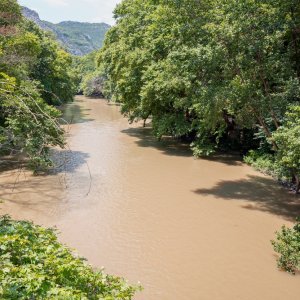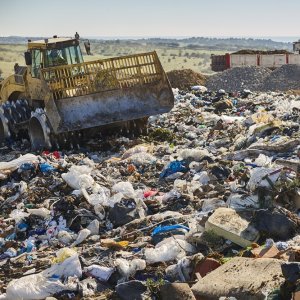
Mining Strategies Reduce Water Consumption, Pollution
 By Karin Dilge | Journalist and Industry Analyst -
Thu, 06/23/2022 - 17:42
By Karin Dilge | Journalist and Industry Analyst -
Thu, 06/23/2022 - 17:42
Mining activities have previously been undertaken with little concern to the environment but growing concerns are highlighting the need to care for the planet and to measure the impact that human activities have. Water usage and pollution remain relevant topics and according to James Lyon, Mineral Policy Center, Washington DC, water stands out as “mining’s most common casualty.”
Mineral waste is a major pollutant as it originates in slurry form and if dumped in water, it can destroy aquatic life or be transported by wind, contaminating other areas. According to the Safe Drinking Water Foundation, mining can impact water quality in four main ways. First, there is acid mine drainage, which is a natural process that occurs when sulfides in rocks are exposed to air and water. Through mining activities, the volume and rate of exposure of sulfur-containing rocks to air and water increases, leading to the formation of sulfuric acid and dissolved iron. The acid run-off dissolves copper, lead and mercury, which leach into groundwater aquifers and surface water sources eventually harming humans and wildlife.
Heavy metal contamination and leaching represent mining’s second main impact on water quality, which happens when metals like arsenic, cobalt, copper, cadmium, lead, silver and zinc contained in an excavated rock or exposed in an underground mine come in contact with water. As water washes over the rock surface, metals are leached out and carried downstream. Metals can be mobile in neutral pH conditions but leaching is accelerated in low pH conditions created by acid mine drainage. Arsenic can cause cancer, skin lesions and neurotoxicity. Lead and mercury can be absorbed by aquatic life and cause anemia, hypertension, kidney dysfunction, and neurological disorders. These same effects can be seen in humans eating contaminated food.
In third place is processing chemicals pollution, which happens when chemical agents like cyanide and sulfuric acid spill or leak from the mine site into water bodies. These chemicals acidify the water and can have effects on humans such as weakness, hemorrhaging and even death.
Finally, there is erosion and sedimentation which are caused by rock and soil disturbances while constructing and maintaining roads, open pits and waste impoundments. A lack of prevention and control strategies can erode the ground, carrying substantial amounts of sediment into streams, rivers and lakes. This can clog riverbeds and smother watershed vegetation, wildlife habitat and aquatic organisms.
These environmental impacts are preventable, however. In Chihuahua, for example, mining companies are already implementing actions to reduce the industry’s environmental impact. Recently, José Franco, Operations Director, Municipal Water and Sanitation Board (JMAS) of Parral, announced the progress of a water treatment project in El Quijote, Chihuahua. Here, mining deposits were fundamental to guarantee a water supply for nearby communities amid the water scarcity issues troubling the state. Around US$487,000 were required to develop the project, which aims to treat water coming from the Veta Colorada, El Arbolito, and El Caiman mines.
According to Franco, the project, which started in 2019 during Javier Corral’s administration, will be concluded in the coming days. The project is expected to treat over 50L/s and source tap water for over 10,000 homes, which represents 25 percent of the registered inhabitants. The treated water is expected to benefit nearby communities called PRI, Che Guevara, Tierra y Libertad, Almaceña and Paseos de la Almaceña.
Public-private projects to source water have also proven to yield positive results, like the water treatment plant run by Minera Cuzcatlán in Oaxaca, which allows the company to source 80 percent of its water from the treatment plant, while the remaining 20 percent goes to surrounding communities. The Mexican subsidiary of Fortuna Silver Mines, reported that it has never used underground water for its operations at its San Jose mine in Oaxaca. Instead, the company recycles and reutilizes waste water.
In 2010, the company signed an agreement with Ocotlan de Morelos’ authorities to manage the wastewater treatment plant (PTAR) for 15 years to meet the company’s water demand. Thanks to PTAR’s restoration, polluted water is no longer poured into the Atoyac River like it was before the company’s intervention. This improved the quality of life of the community’s inhabitants by mitigating health risks and floods. “Changes in laws, technologies and attitudes have begun to address some of the most immediate threats posed by mineral development, but there are still many areas of mining practices that need to be addressed,” reports the Safe Drinking Water Foundation.
















